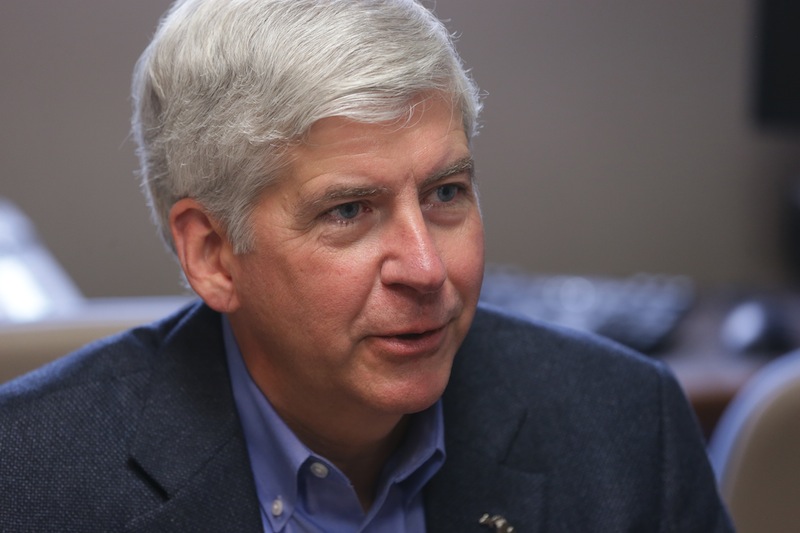HARRISBURG, Pa. (AP) — About 5 million people will be without health care next year that they would have gotten simply if they lived somewhere else in America.
They make up a coverage gap in President Barack Obama’s signature health care law created by the domino effects of last year’s Supreme Court ruling and states’ subsequent policy decisions.
The court effectively left it up to states to decide whether to open Medicaid, the federal-state program for the poor and disabled, to more people, primarily poor working adults without children.
Twenty-five states declined. That leaves 4.8 million people in those states without the health care coverage that their peers elsewhere are getting through the expansion of Medicaid, according to a Kaiser Family Foundation estimate. More than one-fifth of them live in Texas alone, Kaiser’s analysis found.
Among those in the gap is Cheryl Jones, a 61-year-old part-time home-care worker from Erie, Pa., who makes do without health insurance by splitting in half pills for high blood pressure, which she gets from a friend, not a pharmacist. She’d also like to visit a dentist to fix her broken partial dentures. A new pair of glasses might be nice, too.
“There are a lot of us who need medical help now,” she said. “I need new glasses, I need to go to a dentist, I need my medicine. … Think about us working poor. We pay our taxes.”
The Medicaid expansion was supposed to work hand-in-hand with tax credits subsidizing private insurance for people with slightly higher incomes, two keys to the law’s broader aim of extending health insurance to 30million more people. As an enticement for states to expand Medicaid, the federal government promises to pay nearly all of the cost.
Without the expansion, the law is unable to help people who are below the income threshold where tax credits start kicking in, about $11,500 for working adults.
On Wednesday, 24 states and Washington, D.C., will extend Medicaid to more than 4 million adults who would otherwise fall into the same gap as Jones. Access to the care they’ll get is similar to what people get with private insurance, said Joan Alker, executive director of Georgetown University’s Center for Children and Families.
A 25th state, Michigan, plans to expand in April. Wisconsin effectively eliminated its own gap without using the more generous federal contribution.
Politics is apparent in states’ expansion decisions. Of those that joined it, all but five supported Obama in last year’s election. Of those that declined, most are more conservative states in the South, Midwest and northern Rocky Mountains that voted against Obama.
One outlier is Pennsylvania, a moderate industrial belt state that supported Obama twice.
Gov. Tom Corbett, a Republican who sued unsuccessfully as attorney general to overturn the health care law, instead plans to ask the federal government to approve an alternative to a Medicaid expansion. He wants to use the law’s generous Medicaid dollars to cover the same population through private insurance companies while stripping down existing benefits under Medicaid, a target of conservatives’ criticism.
With no guarantee of federal approval, hundreds of thousands of Pennsylvanians — Kaiser estimates 281,000 — could be stuck in the gap until at least 2015.
Corbett doesn’t apologize for not expanding eligibility right away. Rather, administration officials say they want to put themselves in a better position to create a successful, affordable program.
“Our goal is to absolutely get this plan approved so that every uninsured Pennsylvanian has health care options,” said a senior Corbett aide, Todd Shamash. Corbett’s office declined to make him available for an interview.
In the meantime, the uninsured who fall into this new Medicaid gap are selective about seeking care.
“Their health care needs don’t go away just because they’re uninsured,” Alker said, “and what they’re missing out on is consistent primary and preventive care.”
Shelagh Collins of Pittsburgh can get primary care at a federally funded community health center nearby, but she can’t afford more specialized treatment for her joint aches and pains that limit her ability to do certain jobs, she said. After she fell and hurt her hip in the spring, she couldn’t pay for an MRI, she said.
A friend’s loan of $200 covered a month of physical therapy, but it didn’t make the pain disappear.
Collins, 56, used to be a high-level administrative assistant at the Chicago Botanic Garden. Now she gets by on occasional secretarial temporary work and unemployment compensation checks and is trying to protect a 401(k) retirement account of $21,000 that she said makes her ineligible for Pennsylvania’s current Medicaid program.
But the job market is brutal, temp work is scarce and her unemployment compensation checks are at an end, she said.
“I have never gone through anything like this in my life,” Collins said.
Lori Miller would like to see a doctor for the headaches, blackouts and weakness that has made it hard for the Punxsutawney seamstress to pursue more work. The 34-year-old wonders what happened to the physically fit woman who used to walk, run or bicycle every day, and she wonders if she’s still suffering from a painful bicycle accident two years ago for which she never sought treatment.
Living on about $7,000 a year, she can’t afford to see a doctor, Miller said.
“I want to feel like that’s an option to me,” she said, “without worrying about, ‘Do I have enough dollars to do that?'”






